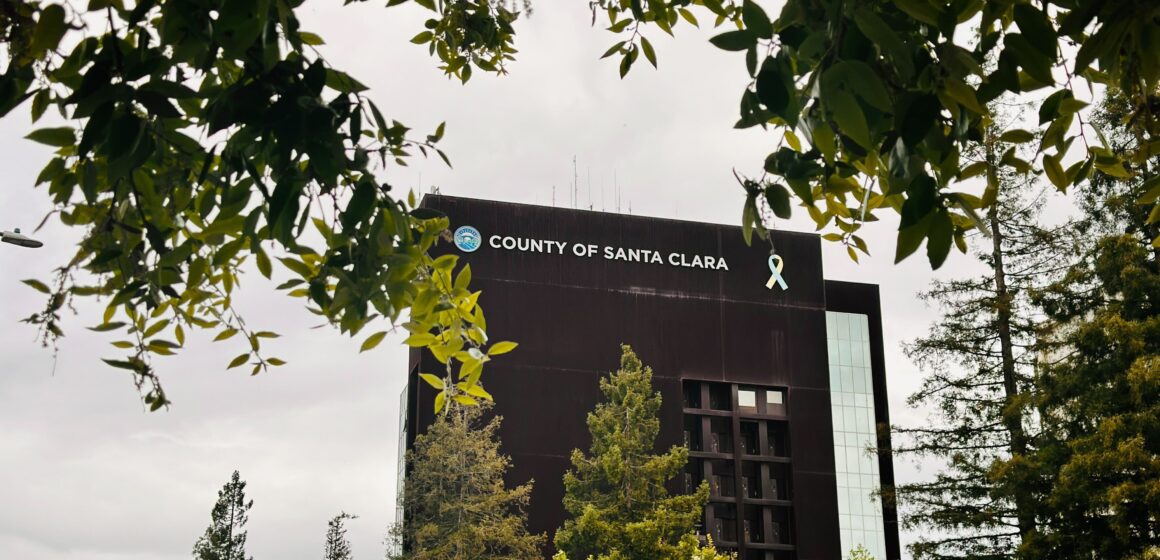Santa Clara County leaders will establish ICE-free zones throughout Silicon Valley — raising physical barriers and locking gates to prevent federal immigration agents from unlawfully using county properties for surveillance and arrests.
The Board of Supervisors voted unanimously Tuesday to follow Chicago’s lead and create an inventory of vacant lots, garages and other county-owned spaces federal authorities might use for immigration enforcement without court orders. They’ll also create signs warding U.S. Immigration and Customs Enforcement (ICE) agents away from these properties — and make them available for county residents to use on private property.
It comes amid parallel efforts to establish a similar policy across San Jose city properties. District 5 San Jose Councilmember Peter Ortiz is expected to introduce the proposal at the city’s Rules and Open Government Committee meeting Wednesday.
District 1 Supervisor Sylvia Arenas spearheaded the county proposal.
“The administration targets brown people in a way that’s just so vile. We all have an immigration story,” Arenas said before the vote. “I’m doing this for my parents, for my family and for my community.”
The county’s plan marks the start of a spreading, national movement to lock ICE out of certain areas after Chicago Mayor Brandon Johnson signed an Oct. 6 executive order laying out the same rules. Meanwhile, Santa Clara County leaders have refined and expanded a three-stage plan to coordinate a counter-response to ICE raids. The plan received preliminary approval last month. It will escalate the county’s responses based on the scale of local ICE activity — be it targeted arrests or raids on schools or grocery stores — to provide legal aid, family shelter, food, child care, health services and communication to residents.
ICE has conducted large-scale operations in cities such as Los Angeles and San Francisco since President Donald Trump took office earlier this year. Santa Clara County has not seen this level of crackdown so far. But fears of immigration raids have kept San Jose students from attending class and slowed foot traffic at Latino-owned businesses. Some undocumented residents have chosen to self-deport.
Scores of residents turned out to speak in support of the county’s move at the meeting, mostly in Spanish. Some voiced hope the county’s efforts might counteract the specter of the federal government. Others voiced concerns about an ongoing struggle to obtain legal representation. Most speakers praised county officials for taking the initiative.
“I’m a first generation immigrant myself and my family has been feeling the impacts of the threats coming in here,” Lucila Ortiz, political director of Working Partnerships USA, said in public comment. “It’s really heartwarming to see leaders like you passing items like this to make sure my family is safe.”
Officials generally acknowledged the efforts might have the federal government breathing down the county’s neck. District 5 Supervisor Margaret Abe-Koga asked whether the county could discuss its properties confidentially.
“I just want to make sure we’re not doing anything to put a target on us,” she said before the vote.
 David Campos, a deputy county executive, said the county has to perform a balancing act.
David Campos, a deputy county executive, said the county has to perform a balancing act.
“We’re trying to be as transparent as we can with the public while also trying to protect the county and work with the board where appropriate,” he said at the meeting. “There are certain pieces we’re handling in a different way, a confidential way, as directed by the county (lawyers).”
County Executive James Williams said the county will have to adapt to match the unpredictable nature of the federal government’s enforcement.
“What’s happening is shifting daily, hourly,” Williams said. “There’s so much work in this space that by necessity has to remain nimble in order to be meaningfully responsive to what’s happening on the ground.”
Contact Brandon Pho at [email protected] or @brandonphooo on X.



Leave a Reply
You must be logged in to post a comment.